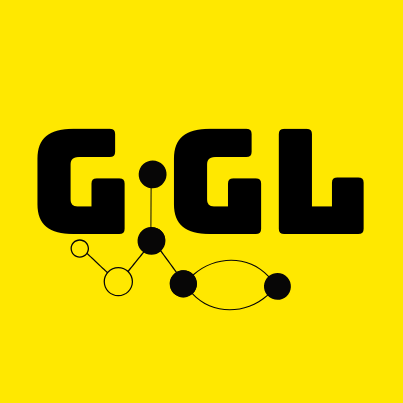Source code for gigl.src.common.graph_builder.gbml_graph_protocol
from __future__ import annotations
from typing import Protocol, Set
import torch
from gigl.common.collections.frozen_dict import FrozenDict
from gigl.src.common.types.graph_data import Edge, EdgeType, Node
[docs]
class GbmlGraphDataProtocol(Protocol):
@property
[docs]
def edge_types_to_be_registered(
self,
) -> list[EdgeType]:
"""Maintains a list of EdgeTypes associated with this graph data.
Used in conjunction with GraphBuilder, to preserve EdgeTypes when combining
multiple GbmlGraphDataProtocol objects together.
Returns:
list[EdgeType]
"""
...
@property
[docs]
def global_node_to_subgraph_node_mapping(
self,
) -> FrozenDict[Node, Node]:
"""Maintains Mapping from original Node to Mapped Node that is used in the underlying graph data format
During creation of GBML Data representations using graph libraries such as DGL and Pytorch geometric,
there may be occasions where nodes will need to be remapped to contiguous node ids 0, 1, 2 .... either
as a requirement from the graph library or to maintain simpler logic for formulating and working with
these graphs data formats.
Returns:
dict[Node, Node]
"""
...
@global_node_to_subgraph_node_mapping.setter
def global_node_to_subgraph_node_mapping(
self, global_node_to_subgraph_node_mapping: dict[Node, Node]
) -> None:
"""See global_node_to_subgraph_node_mapping
Args:
global_node_to_subgraph_node_mapping (dict[Node, Node])
"""
...
@property
[docs]
def subgraph_node_to_global_node_mapping(self) -> FrozenDict[Node, Node]:
"""Inverse mapping of global_node_to_subgraph_node_mapping
Returns:
FrozenDict[Node, Node]:
"""
...
[docs]
def get_global_node_features_dict(self) -> FrozenDict[Node, torch.Tensor]:
"""Computes and fetches a dictionary mapping the global node to its
relevant node features
Returns:
FrozenDict[Node, torch.Tensor]
"""
...
[docs]
def get_global_edge_features_dict(self) -> FrozenDict[Edge, torch.Tensor]:
"""Computes and fetches a dictionary mapping the global edge to its
relevant edge features
Returns:
FrozenDict[Edge, torch.Tensor]
"""
...
@staticmethod
[docs]
def are_same_graph(a: GbmlGraphDataProtocol, b: GbmlGraphDataProtocol) -> bool:
"""
Args:
a (GbmlGraphDataProtocol)
b (GbmlGraphDataProtocol)
Returns:
bool: Returns True if both a and b objects that implement GbmlGraphDataProtocol
represent the same graph in the global space. i.e. both have same nodes + related features,
and edges + related features. i.e. a form of loose equality.
For example for a: PygGraphData and b: PygGraphData, may both have same 3 nodes and 3 edges with
the same features. But, because they are built in a specific way i.e order of edges and nodes,
they may not be strictly equal: a != b. But really, the two represent the same "graph" in
different ways. This function fills that gap.
"""
a_global_node_features = a.get_global_node_features_dict()
b_global_node_features = b.get_global_node_features_dict()
if len(a_global_node_features) != len(b_global_node_features):
return False
a_global_edge_features = a.get_global_edge_features_dict()
b_global_edge_features = b.get_global_edge_features_dict()
if len(a_global_edge_features) != len(b_global_edge_features):
return False
for global_node, a_node_features in a_global_node_features.items():
if global_node not in b_global_node_features:
return False
b_node_features = b_global_node_features[global_node]
if type(a_node_features) != type(
b_node_features
): # Implictly also checks None == None
return False
if isinstance(a_node_features, torch.Tensor):
if not torch.equal(a_node_features, b_node_features):
return False
for global_edge, a_edge_features in a_global_edge_features.items():
if global_edge not in b_global_edge_features:
return False
b_edge_features = b_global_edge_features[global_edge]
if type(a_edge_features) != type(
b_edge_features
): # Implictly also checks None == None
return False
if isinstance(a_edge_features, torch.Tensor):
if not torch.equal(a_edge_features, b_edge_features):
return False
return True
@staticmethod
[docs]
def are_disjoint(a: GbmlGraphDataProtocol, b: GbmlGraphDataProtocol) -> bool:
"""
Returns True if the two GbmlGraphDataProtocol objects do not share any edges.
:param a:
:param b:
:return:
"""
a_edges = set([edge for edge in a.get_global_edge_features_dict().keys()])
b_edges = set([edge for edge in b.get_global_edge_features_dict().keys()])
smaller_edge_set: Set[Edge]
larger_edge_set: Set[Edge]
if len(a_edges) < len(b_edges):
smaller_edge_set = a_edges
larger_edge_set = b_edges
else:
smaller_edge_set = b_edges
larger_edge_set = a_edges
for edge in smaller_edge_set:
if edge in larger_edge_set:
return False
return True
